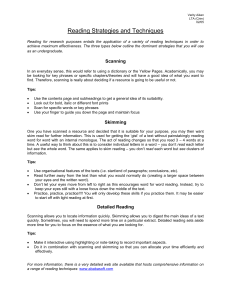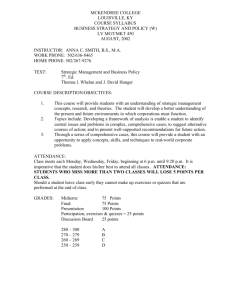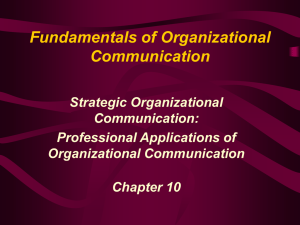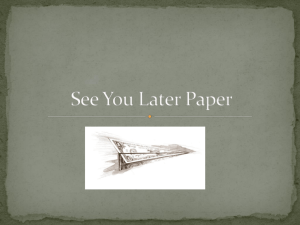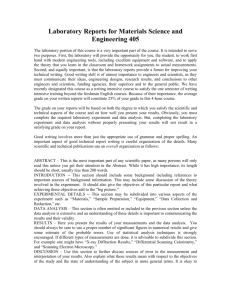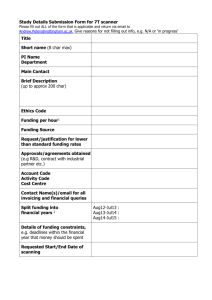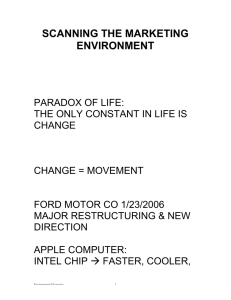Environmental Scanning - The University of Scranton
advertisement
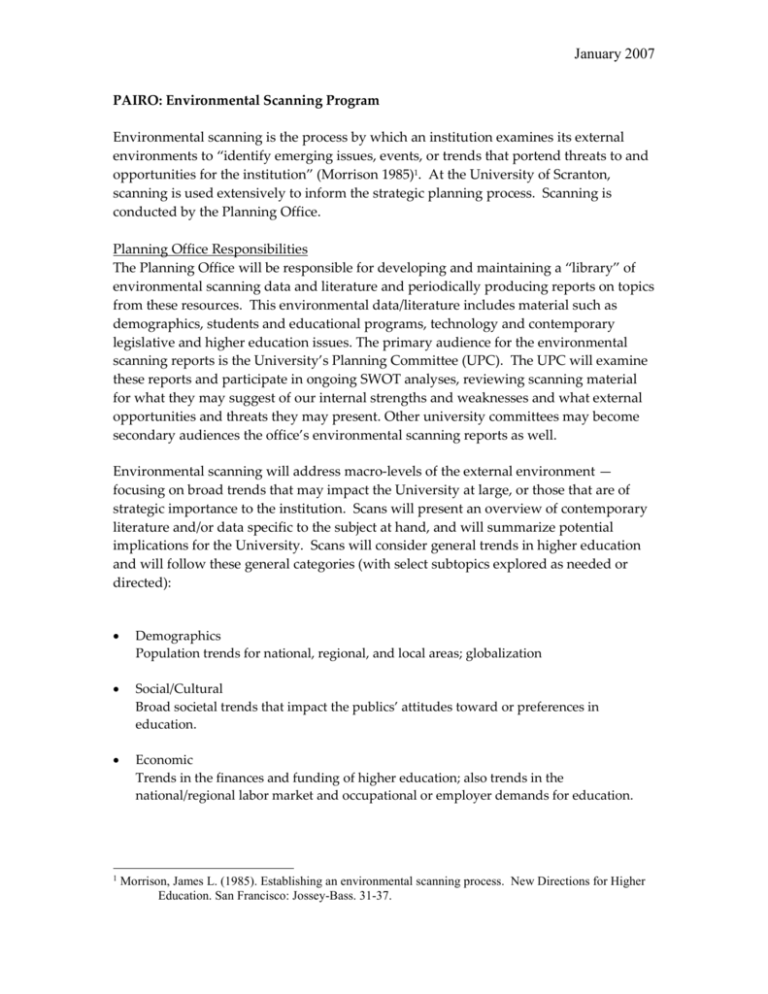
January 2007 PAIRO: Environmental Scanning Program Environmental scanning is the process by which an institution examines its external environments to “identify emerging issues, events, or trends that portend threats to and opportunities for the institution” (Morrison 1985)1. At the University of Scranton, scanning is used extensively to inform the strategic planning process. Scanning is conducted by the Planning Office. Planning Office Responsibilities The Planning Office will be responsible for developing and maintaining a “library” of environmental scanning data and literature and periodically producing reports on topics from these resources. This environmental data/literature includes material such as demographics, students and educational programs, technology and contemporary legislative and higher education issues. The primary audience for the environmental scanning reports is the University’s Planning Committee (UPC). The UPC will examine these reports and participate in ongoing SWOT analyses, reviewing scanning material for what they may suggest of our internal strengths and weaknesses and what external opportunities and threats they may present. Other university committees may become secondary audiences the office’s environmental scanning reports as well. Environmental scanning will address macro-levels of the external environment — focusing on broad trends that may impact the University at large, or those that are of strategic importance to the institution. Scans will present an overview of contemporary literature and/or data specific to the subject at hand, and will summarize potential implications for the University. Scans will consider general trends in higher education and will follow these general categories (with select subtopics explored as needed or directed): Demographics Population trends for national, regional, and local areas; globalization Social/Cultural Broad societal trends that impact the publics’ attitudes toward or preferences in education. Economic Trends in the finances and funding of higher education; also trends in the national/regional labor market and occupational or employer demands for education. 1 Morrison, James L. (1985). Establishing an environmental scanning process. New Directions for Higher Education. San Francisco: Jossey-Bass. 31-37. January 2007 Legislative/Political/Legal Trends in national/state legislation or regulations that will impact higher education; other regulatory environments (such as information security and data-related legislation) Technology Trends in technology (computer-related or otherwise) that may impact the teaching/learning process; security issues; business continuity and emergency planning Competitive/Organizational Trends in other organizations — competitors, peers, feeder organizations (like K-12 system), accrediting bodies, Catholic Church — that may impact the University. Physical Environment For more information, or to access past environmental scans and/or related data, contact PAIRO at 941-6567.



